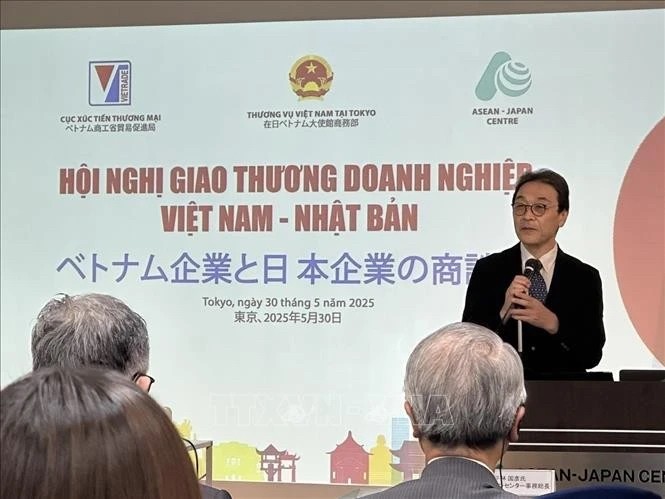Japanese Students Savor Hue's Flavors
| Experience Yukata: A Taste of Japan in Hanoi | |
| Sino-Japanese clashes lkely to escalate amid growing military threats |
Over the course of four days, Vietnamese and Japanese students were divided into groups to get to know each other. To quickly bond with their group members, Anh Thu, Thu Ha, and Tan Dat invited their Japanese friends Fuji Hina and Noguchi Taiki to explore the Dong Ba Market. There, the Japanese students had a wonderful experience with Hue's cuisine and people.
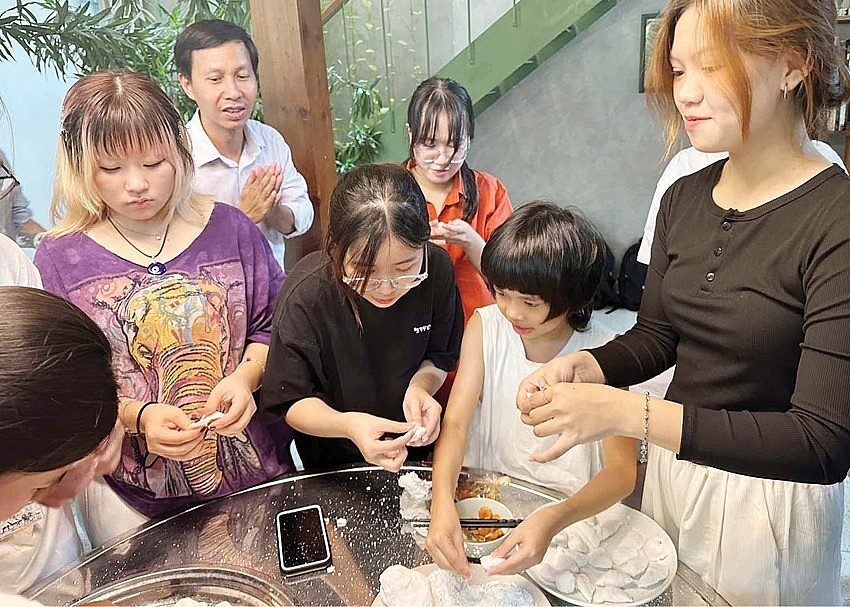 |
| Vietnamese and Japanese students experience making banh loc together. Photo: Thua Thien Hue Newspaper |
"I was invited by my Vietnamese friends to try banh loc, bun bo, and che Hue. These dishes were so delicious that I kept saying 'oishii' (delicious) repeatedly. Especially the roasted pork sweet dessert, which had a unique flavor that I had never tasted before. I was also impressed by the friendliness and hospitality of my three group members and the vendors at the market," said Fuji Hina.
The students also experienced meditation practice at Cat Tuong Quan Zen House. This activity made the Japanese students feel familiar because it had similarities to the Zen and tea ceremony culture in Japan.
Making Sinh village folk paintings, a traditional art form of Hue, was the next activity the students experienced. This is a long-standing and famous type of painting, carrying the traditional cultural beauty of the ancient capital and playing an important role in the spiritual life of the people of Hue.
The process of creating a Sinh village painting is elaborate. The painting paper must be 'diep' paper, made from the bark of the 'do' tree, dried, and then coated with a layer of diep (a type of powder from shells or mussels). Each painting is printed from traditional woodblocks, meticulously carved by hand. The colors of Sinh village paintings are all taken from natural materials such as charcoal (black), red earth (brown), and leaves (green). In the workshop space, the students were guided by artisans step by step to paint the 12 zodiac animals.
The final experience of the workshop was making banh loc by themselves. Students and teachers worked together through the steps of kneading dough, making fillings, and shaping the cakes, creating a joyful and laughter-filled atmosphere in the kitchen.
"The Vietnamese students patiently taught me step by step. We even had a competition to see which group made the best cakes. On the first day, I was still quite unfamiliar, but now I feel close and connected to everyone. Hue culture and the people of Hue are truly wonderful," shared Kakimoto Miyu, a Japanese student.
Ayako Fujieda, the group leader in charge of leading Kyoto Seika University students, said that the teachers and Japanese students were all surprised by the diversity of Hue culture. "Two years ago, I also had the opportunity to lead a group of Japanese students to Hue and visit the Hue Cultural Museum, explore the cuisine, and go paddle boarding on Tam Giang Lagoon. Returning to Hue this year, I experienced many other interesting activities. I am impressed with Hue culture and the enthusiasm of the teachers and students in welcoming us."
The workshop concluded with many memorable memories and new friendships formed. The experiences in Hue not only helped Japanese students learn more about the ancient capital but also connected them with their Vietnamese friends. This is not only a learning opportunity but also a bridge for cultural exchange between the two countries, opening up opportunities for cooperation and sharing in the future. Upon saying goodbye to Hue, the Japanese students all promised to return to Hue and continue exploring Vietnamese culture.
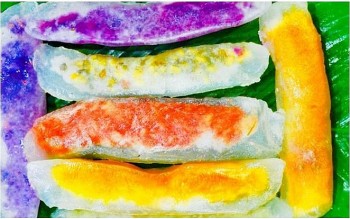 | Hue's Specialty Cake is a Rare Vietnamese Treat This cake is not sold in many places. If you want to taste it, you have to go to certain shops. |
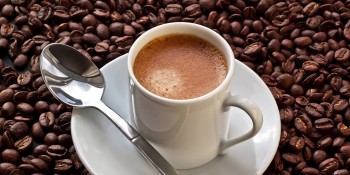 | Hue's Salted Coffee - A Unique and Tasty Drink If iced milk coffee is popular in Ho Chi Minh City and egg coffee is Hanoi's specialty, then salted coffee is a delicacy of Hue. |
Recommended
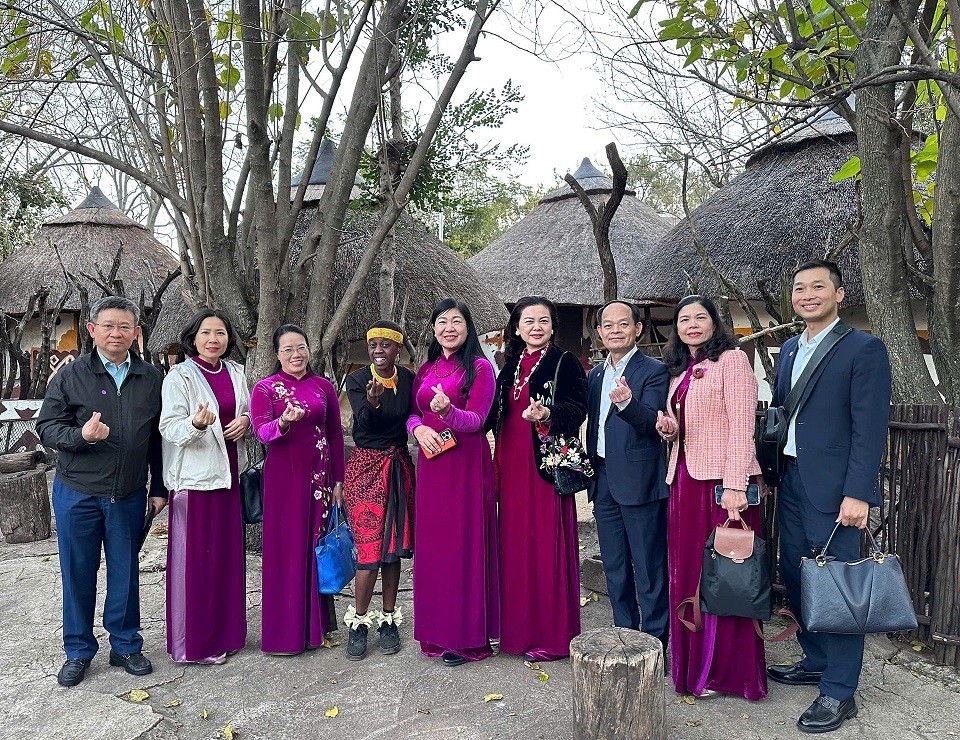 Viet's Home
Viet's Home
Hanoi, South Africa Strengthens People-to-people Exchanges, Expands Multi-sector Cooperation
 Viet's Home
Viet's Home
Hue City to Raise Awareness on Mine Accident Prevention
 Focus
Focus
Vietnam Leaves Imprints on the World Peacekeeping Map
 Viet's Home
Viet's Home
“Global Vietnamese Singing 2025” - Connecting Hearts Longing for Homeland
 Viet's Home
Viet's Home
Vietnam’s People's Public Security Force Actively Contributes to UN Peacekeeping Operations
 Viet's Home
Viet's Home
HAUFO Enhances Competence of People-to-People Diplomacy Personnel
 Viet's Home
Viet's Home
Hands that Reserve Da Long Brocade Craft
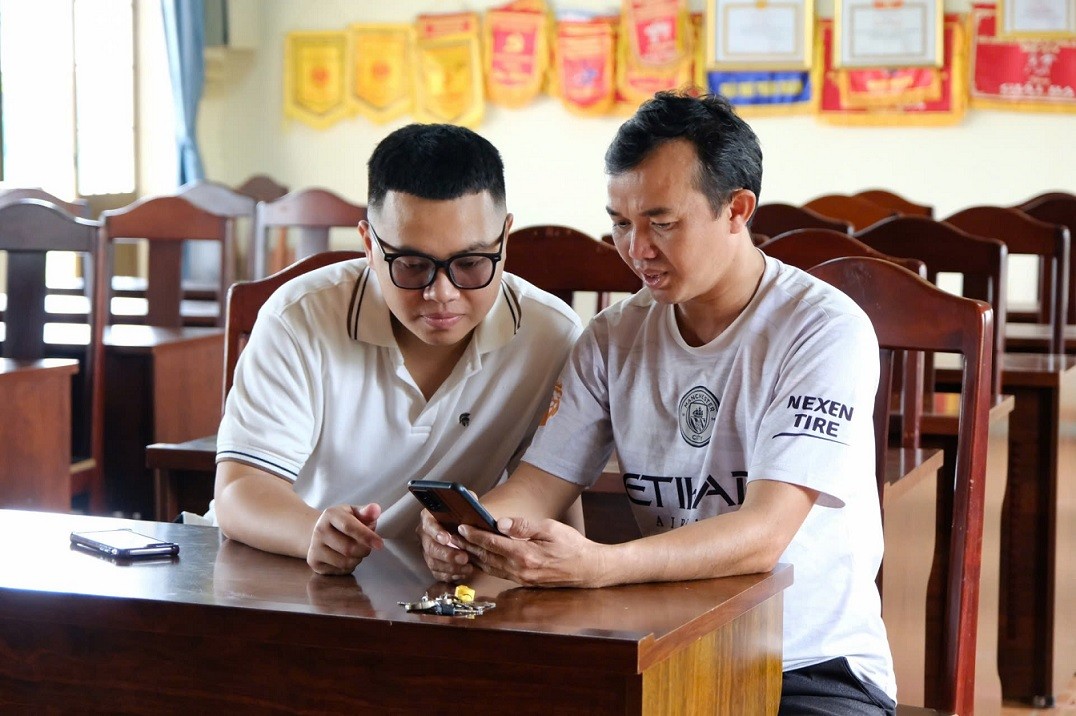 Viet's Home
Viet's Home

